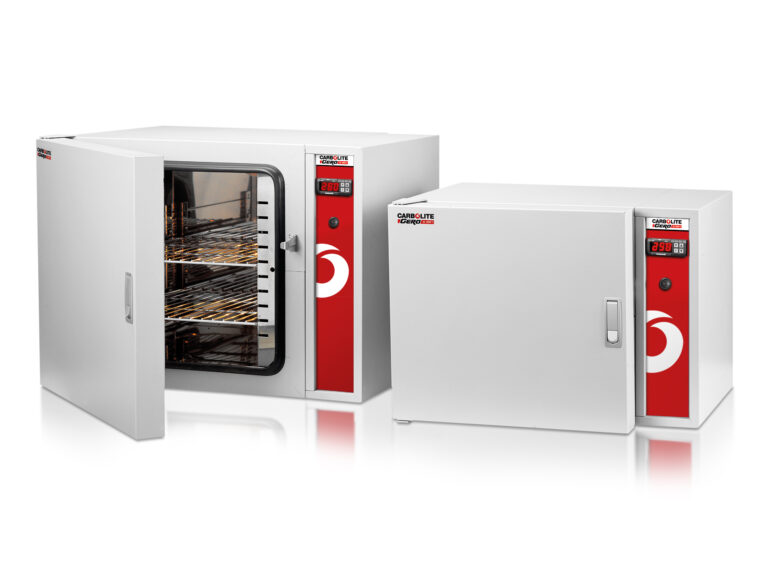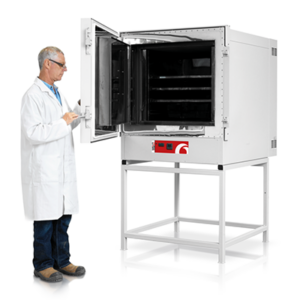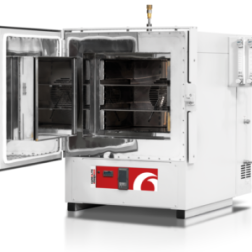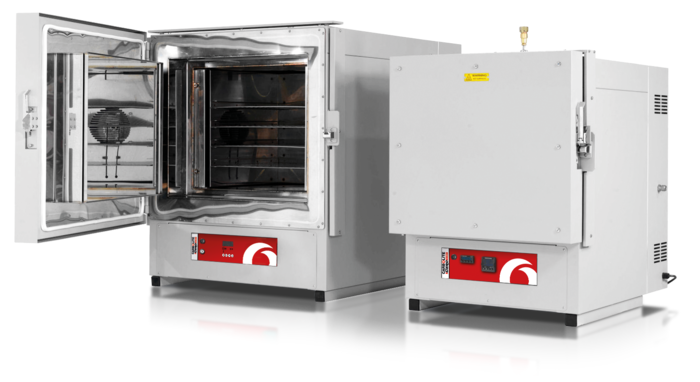more than 80 years of heating engineering
Ovens
Carbolite Gero manufactures and stocks a range of ovens for laboratory and industrial applications. Whether you require natural or fan-assisted convection or an atmosphere-controlled high-temperature oven, solutions meet BS EN 61010-2-010:2003 standards and have outstanding temperature uniformity.
The range of optional extras to meet your specific requirements is almost limitless and includes over-temperature protection, specialist shelves and runners, digital timers and the very latest advanced controllers.

Laboratory and Industrial Ovens - FAQ
What is a laboratory oven?
A laboratory oven is a heating device that meets the precise temperature control and temperature uniformity requirements of laboratory work. It is a standard piece of equipment in many labs, used for a wide range of applications such as drying, evaporating, or curing. Depending on the requirements, laboratory ovens vary in size and volume as well the maximum temperature they can reach.
IS A LABORATORY OVEN SUITABLE FOR DRYING MATERIAL?
A laboratory oven is suitable for drying materials so long as the oven chamber is ventilated. Standard ovens usually have vents that can be opened. Additional ventilation can often be provided by using a moisture extraction fan. It would be best if you also considered the material being dried. For lightweight materials and powders, the best choice may be a natural convection oven with a vent to avoid blowing material around the chamber.
What is the typical operating temperature of a laboratory oven?
The typical operating temperature of a laboratory oven is entirely dependent on the application requirements. Carbolite Gero supplies ovens with maximum temperatures ranging up to 300°C for applications such as drying and moisture extraction and ovens for applications such as annealing and sintering that can require temperatures up to 600 or 700°C.
WHAT SHOULD I CONSIDER WHEN BUYING A LABORATORY OVEN?
When buying a laboratory oven, you should consider the required volume, the maximum temperature, and the temperature uniformity required. It is important to consider the application. If the main purpose is the drying of samples, it may be beneficial to consider modifications specifically designed for moisture extraction. Similarly, if the samples contain low levels of solvents, explosion relief panels and other options designed to relieve pressure and reduce the risk of explosions are required.
IS IT POSSIBLE TO PLACE SAMPLES WITH SOLVENT INSIDE A LABORATORY OVEN?
It is possible to place samples with solvents inside a laboratory oven, provided that the oven is designed to withstand the explosive vapours produced by such processes. Ovens intended for stoving and curing processes should adhere to the safety standard EN1539. Such ovens should include safety features such as explosion relief panels, and airflow levels appropriate for the calculated solvent level of sample materials.
What is the typical size of a laboratory oven?
Carbolite Gero laboratory ovens range in size from 30 litres up to 910 litres. Ovens with capacities up to 200 litres are usually mounted directly onto work benches, whereas larger ovens are typically floor standing.
WHAT IS THE DIFFERENCE BETWEEN A DOMESTIC AND A LABORATORY OVEN?
A laboratory oven generally has a higher build standard than a domestic oven. Laboratory ovens typically have stainless steel liners designed to withstand the harsher processes, and continuous use, standard within commercial laboratories.
Innovations
Our Latest Innovations
At Opti-Tech, we live on the leading edge. Find out what’s new around here, from
the latest solutions to the newest technologies.




